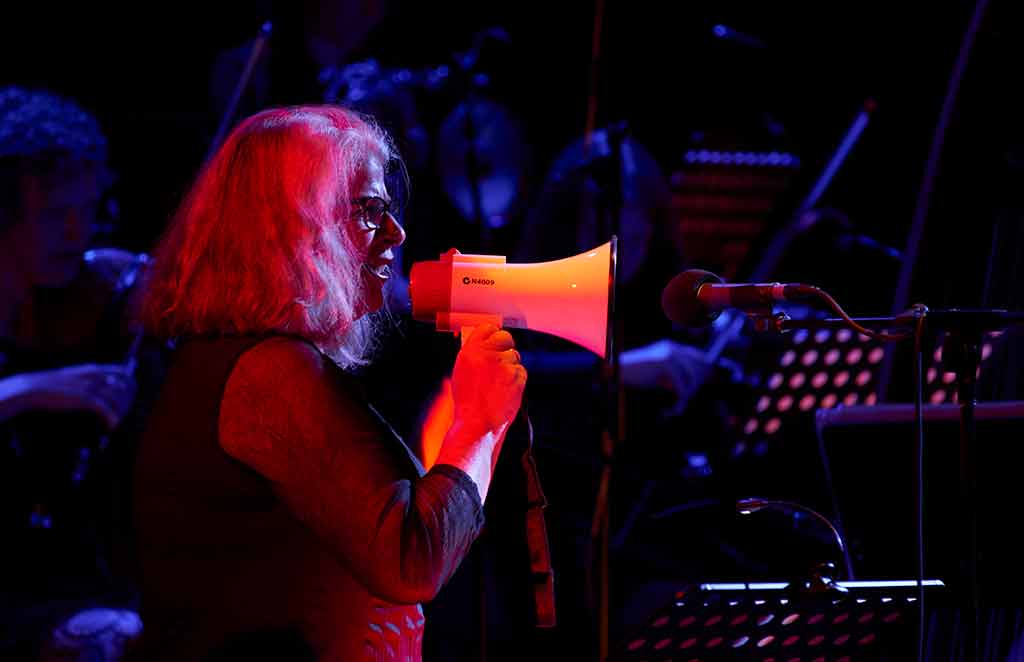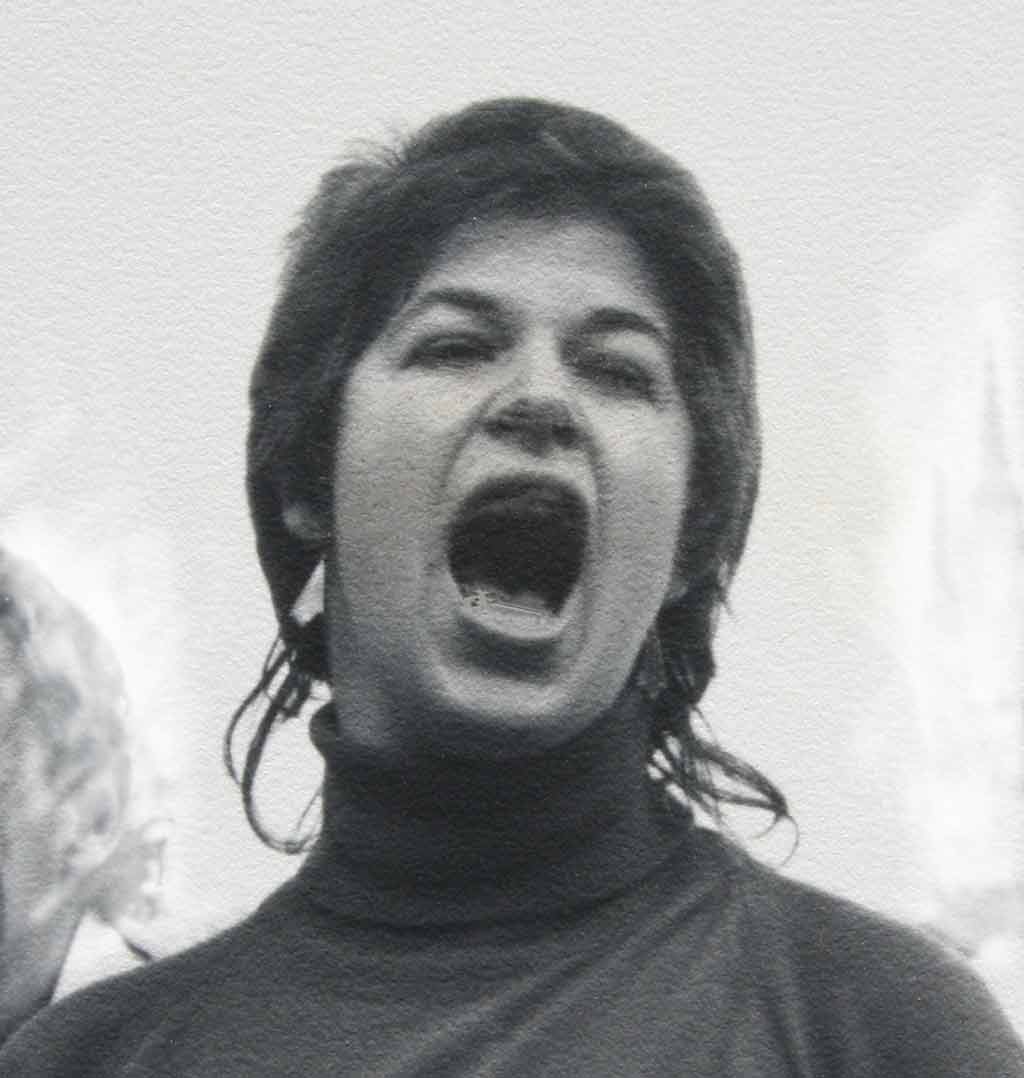ENA – berni.m.janssen – book
Price range: $15.00 through $40.00
ENA is a text art book that draws on the traditions of poetry and ‘spoken word’ art forms. The text is narrated by the character ENA, who is a feminist looking back on her life as a young activist and then contemplating her position in the world as an older creative thinker.
Under the fingertips of legendary Australian text creator berni.m.janssen ENA’s story is at times blistering and at times haunting. The text resonates with the frustration that many older activists feel in present times: that their efforts in changing society over some 50 decades have been ignored; that any young person with a loud voice suddenly becomes the torch for what has been a centuries long battle with many fronts: the battle for equal human rights in every direction; the battle for environmental mindfulness and sustainability, the battle for the avant garde to be treated with dignity and respect by mainstream cultures; the battle to uphold the values of science.
This book bleeds, and that is why you should read it before you go out to your next rally – before you take your next stand.
Do your research. Know those who fought before you were born. Then the battle can be won. Until then you will be lost – destined to repeat the mistakes of history.
ESSAY: LOOK AT janssen GO
By James Hullick
berni.m.janssen is one of the great Australian performance text artists. That her name and work is not widely known locally and abroad is a travesty. In the context of any of the cutting edge artforms, and representation of the artists who make that work, Australia is a nation in catastrophic disgrace.
Australians in these early decades of the 21st century are still thoughtlessly bound to anti-intelligence: that creative and progressive thought is for wankers; that science is a choice; that research is decadent; that social improvement is for communists; and that service to one’s community is dead. We live in a nation of greed, where the bleat of the golden calf has the loudest voice.
In Australia, the only culture given any mainstream value is pop culture. It is a McDonald’s populace that has been hoodwinked into wanting the fast hit. This explains the prominence of the pop diva; and with the emphasis on a person’s homogenously stylised voice, rather than anything they might sing. It doesn’t matter who wrote the song, and besides, it’s only candy music anyway: Kylie Minogue; Delta Goodrum; Jimmy Barnes and so on.
But wait a minute: don’t misread the argument. There is room for pop culture. Pop plays its role in society, but to dismiss all other artforms based on shallow passing thoughts is a miraculous nonsense and a great humiliation to those who strive to better Australia by advancing her many cultures.
It would be easy to blame the public, but that would be a mistake. The public have very little to do in bestowing anonymity upon great thinkers like berni.m.janssen. The public has been played by the architects of pop industries driven by the wheels of greed. People assume that an artform, such as text art or performance poetry, is elitist: an artform for those with high IQs. But the opposite is true. The freedom of these and other cutting edge artforms allows any mind of any ability to answer the creative call and share it with like-minded souls. The masterful crime of the pop industries is to feed the public the message that anyone can gorge on pop culture, whilst at the same time making it the pinnacle of elitism. One really feels for Nick Cave having to sell his Brighton (UK) seaside mansion on the market for 3.5 million pounds.
In the cold light of day, Nick’s lyrics just don’t stand up against the artistry of janssen. Not to say that Nick is bad (he’s done tremendously well in a brutal industry), just that janssen is the text master. Perhaps Nick should give the house to janssen. Maybe she deserves it more. History will judge us for these indiscretions.
But you are not welcome to make pop culture. You may consume it, but it is an impossibility for the majority of people to enter the machine rooms of pop. This is directly counter to the sales pitch of pop: that pop is for everyone. When you buy it, you buy a piece of yourself. Or so they will tell you.
Pop is about pie slices. The object being to obtain the biggest slice of the pie as possible and at all costs. It is clearly stated in the contract: popular culture: to be popular, by definition, many people must openly consume the thing.
But it is not for you to create it from within. Not really. You have to have access to equipment, money, white rabbits, universal tropes, ability and industry backing. You have to play the game. You have to follow strict rules. You have to stick to the message. You have to have outrageous stamina and a larger-than-life persona (real or unreal). You have to be of high talent – don’t kid yourself that pop artists aren’t talented. It’s not the pop artists who are to blame. They are doing their best them. Often in sorrow. Often under immense pressure.
George Harrison would endlessly fret about his guitar playing: stating to the Beatles that they should invite Eric Clapton in because he can do what they want. Eventually, George got his way, and it’s Eric on While My Guitar Gently Weeps.
It’s fine. It’s fine. Don’t worry. It’s fine for pop culture to be a part of your culture. Eat McDonalds. It’s fine. Dance to Michael Jackson. It’s fine. Don’t worry about it. Don’t worry about what they say about him. It’s fine. Learn the moonwalk. I can do the moonwalk. It’s fun. It’s fine. But – and you knew my butt was coming to your face – but when you grow and become a big person, you should also broaden your cultural tastes, insights and experiences. Cultural grown-ups understand that to only like the same shit you listened to or read when you were 16 as a 75 year old is a complete fucking waste of social resources. You are going to retire from your work and think ‘Oh fuck, I’ve missed the point of life.’ And you will panic. You will then go to block-buster Disneyland exhibitions at well-funded art galleries in some pathetic attempt fill yourself with the wealth of a life wisely lived. But you will fail. You left it too late. You ignored the great creators of your day. You sneered at them and asked them what they did for a real job. You missed their insights. Your death falls like a pebble on some alien lifeless stone beach, otherwise known as Socrates’ Revenge: for you never even asked why you liked that shit in the first place. Or what is ‘like’? Did no-one tell you?
‘Research is for smart arses’. That was the line you were fed. And you never challenged it. Not until sunset. Then it was just too late. They are always late, these Australians. ‘She’ll be right, mate’. ‘I’ll do it later’. 15 minutes late is Aussie ‘on time’. But actually it’s not. 15 minutes late is 15 minutes late. It is not on time. You need to arrive, paying attention, at the allotted time. That is on time. When it comes to cultural comprehension, that means that your understanding of cultures needs to grow in step with your own aging process.
The rise of stupidity and superficiality in the arts is also a reflection of the negative behaviours presented by contemporary artists themselves, and the contemporary arts industries and institutions in Australia. They have monumentally fucked it up. Reasonable government arts funding and decades of societal affluence have been pissed up against the wall, and it always comes back to self-interest. It is so very ‘fall-of-the-Roman-Empire’. Allow an explanation.
New ideas, new techniques, new art forms and new art works are inherently risky. Audiences may not like them. They may fail. Most festivals, arts institutions and infrastructure still somewhat idiotically measure the value of cutting edge art by the turnstile. They want immediate financial gratification. But new ideas don’t work that way. It takes much development time to come up with any breakthrough idea. There are many failures along the way. It also takes time for audiences new to the new idea to comprehend its worth. The great crime here is that council, state and federal governments have taken the time to comprehend the problem, and offer many institutions massive amounts of funding to underwrite the cost of new ideas that are then systematically diverted from any form of risk taking or creative investment. No institution wants to be left holding some failed artist’s warm and pungent turd. It wouldn’t do.
The net result of a contemporary arts industry cultivated by vampires is that the avant garde artists themselves are starved of opportunity and the time to make their work. When you starve and abuse people, they lose their shit. They lose the luxury of morality, because they simply must do anything to survive. They become territorial and start infighting. It’s cruel. Unfortunately one of the key ways for this whole shit storm to clear is for the artists themselves to behave with the utmost dignity and compassion. The indiscretion of the abuser must be rectified by the abused. It is quite unfair. Many achieve this state of wisdom: one might flag the performance artist, Stelarc, as a remarkable servant of his art. JOLT Arts and Hullick Studios have worked with Stelarc on several occasions, and his level of dignity, and particularly in a moment of disagreement, is absolutely outstanding. The examples of better living are out there, shining quietly amongst us.
Decades of successful cutting edge artists have blown many opportunities to build cultural infrastructures. After many hard years of scrapping around like a pirate, an artist might break through and come into wealth and social acknowledgement. But very few artists use this privilege to then generate meaningful opportunities for other artists. It’s too much work, or they want focus on their art alone, or they hate everyone because of the infighting and competition, or they get seduced by the golden calf: and my she sings. Like an angel, how she sings. And all the promises. The pretty promises she will never keep.
Perhaps these comments give context to the life and times of Ena. Ena is a character created by berni.m.janssen. In a sense she is an amalgam of many women janssen has known. There’s a piece of janssen in there – but janssen wouldn’t call herself an activist. Rather that Ena is a collective proper noun that acknowledges decades of protest by many women. The feminist. The voice crying for social betterment. The voice for ethical and sustainable environments. The artist. The activist. The front cover shows janssen roaring in 70s protest, but in the context of this book the image plays the character Ena – and celebrates the power of many roaring sisters.
Fifty years on, it is like it never happened. It is arresting to see how little acknowledgement is given to those women who have been driving change for so many decades. Janssen’s character Ena honours and flag-poles that fight. A young person walks in and says bigotry is bad and it’s like no one ever said that before. It’s like no one ever challenged that before. It must be heartbreaking for the Ena’s out there in their thousands, who took up arms and delivered significant change, to be cast aside. It must be very insulting to be considered a dinosaur of feminism. To suffer media-blasted insinuations that wave ill-researched fingers: ‘even though you protested, you failed’, and that, ‘you failed’ – according to the pop culture megaphone – ‘because you didn’t fully understand inclusive societies, or use the ephemeral and ‘correct’ politicised names for things’.
As the CEO and Director of Hullick Studios and JOLT Arts, I fell into conversation with janssen about these atrocities. The conversation grew around our mentorship of Esther Tuddenham, an author living with Down Syndrome. Tuddenham brought her own powerful voice to the table.
Separately, I had been working on a modern day Australian mythical epic, titled Epic Topias. Some of the works that JOLT Arts and Hullick Studios create sit within this epic. It has a surreal narrative that is often broken and illogical. The nutshell of it is the archetypal interactions between interdimensional beings and a family living in the state of Victoria. Characters intertwine through stories in uncanny ways. Ena, the narrator in this book by janssen, is the aunt of Jacques Le Scatterman – a character I play on stage in other shows. Le Scatterman is the childhood friend of Lilly, who is the character Esther Tuddenham has written about in her poetry book The Sea-er.
It is an act of great generosity that janssen chose to put her voice to the Epic Topias saga. I, and the other Epic Topias creators, remain endless grateful. janssen is a great master with other works to attend to. That janssen offered Tuddenham, myself and others working on the saga her voice shows great kindness. Note that kindness. Note that style and grace. Note that love of sharing ideas. Note that devotion to the collective.
janssen has always understood the point of the Epic Topias saga. The point being to take a pop idiom – the saga (consider the Marvel Universe or Lord of the Rings) – and then share its authorship amongst those people who are not included in mainstream cultures. Before, I wrote that intellectualism is not about the measure of intelligence: that anyone can engage with thoughtful, avant garde ideas. Tuddenham, as an artist identifying with Down syndrome, is your proof of concept. Her book, The Sea-er, puts the anti-intellectual to shame. The golden calf cannot bear the Tuddenham heat.
Ena rings of similar force. Where you see words. I see greatness. Where you see words. I see the electric intelligence of compassion.
We challenge you to see the world the way we do, and not the way that some marketing executive in a film studio would like you to see it. Above all else, we dare you to see the world as it is and not as you would wish it to be.
Turn to the back cover of the book. You will not shut any of us up. We will make our work regardless of the golden calf and all who may be seduced by her pretty musings.
Turn to the back cover of the book.
Look at berni.m.janssen go.
Turn to the back cover of the book.
Now that is commitment to a cause.
What will you commit to?
BERNI JANSSEN BIOGRAPHY
text artist / poet / performer
Legendary Australian text artist, creates with artists and people in communities. Words are at the heart. Books published include ENA, Xstatic, mangon and lake/vale. Other texts have been published in print and online literary magazines and anthologies including: Cordite; Heat 12; Meanjin; La Traducterie. Australian Poets Today. (France); Poetry and Gender. UQP; She’s Fantastical, An Anthology of Australian Womens Non-Realist Fiction.
janssen is known for her lively/evocative/invigorating/captivating/engaging/ performances.
janssen’s work has been presented and performed live at festivals and events, here and overseas, and on radio. Interdisciplinary collaborations with artists including: Warren Burt; Lawrence Harvey; Jodee Mundy, Carolyn Connors, Margaret Trail, James Hullick; have been presented and performed, amongst others: ABC Radio’s: Poetica, New Music Australia, Books and Writing; Aural Text 3 RRR; La Mama Poetica; EN RED 0. VII Symposium of Electroacoustic and Electronic Music (Spain); MIFA. Composer, Chris Dench, has created libretti with berni’s words – ik(s)land(s) performed by Elision, in Brisbane, Los Angeles and Berlin; and n (ich) t performed by Aphids Trio.
Pages: 120 including front and back cover
No. Images: 4
Additional information
| Book Format | Print Edition plus eBook Edition, eBook Edition only |
|---|
This project has been assisted by the Australian Government through the Australia Council, its arts funding and advisory body. This project is supported by the Victorian Government through Regional Arts Victoria and Creative Victoria.







